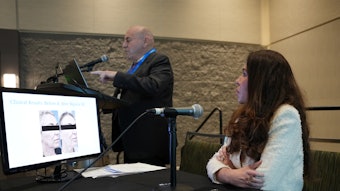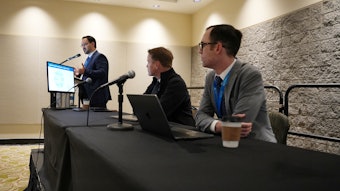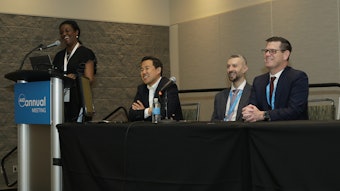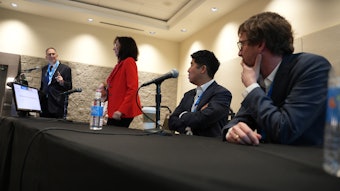New solutions for old conditions
Innovative treatments and alternative approaches could be game changers for common dermatologic diseases.

U030 – Bread n’ Butter with a Side of Nutella: Short n’ Sweet, High-Yield Updates on Management of Bread n’ Butter Dermatologic Diseases
7:30-8:30 a.m. | Saturday, March 8
Room W304H
Dermatologists have very busy schedules. Keeping up with the latest information on new diseases is challenging, but it’s important not to leave the most common conditions behind.
The session, U030 – Bread n’ Butter with a Side of Nutella: Short n’ Sweet, High-Yield Updates on Management of Bread n’ Butter Dermatologic Diseases, will bring together a panel of experts for updates on warts, psoriasis, skin cancer, cosmetic dermatology, and dermatopathology.
Session director Erin Barret (Wei), MD, FAAD, said her presentation, “High-Yield Overview of the Changing Landscape of Management of Autoinflammatory Diseases,” will focus on a number of new therapeutic targets for atopic dermatitis. This includes OX40, IL-31, and IL-22, with emerging treatments such as rocantilimab (an anti-OX40), amlitemab (an anti-OX40L), and neolizumab (an anti-IL31) that are still in the development and testing stages.
“These are significant as they target newer, more specific immune pathways involved in atopic dermatitis, which could lead to better control of the condition with fewer side effects,” she said.
Dr. Barrett, who is an associate professor in the department of dermatology at the University of Nebraska Medical Center (UNMC) in Omaha, will also touch on upcoming therapeutics for other autoinflammatory diseases. She will be joined by a handful of UNMC dermatology colleagues to round out the high-yield Saturday session.
Skin cancer
 Vanessa Voss, MD, FAAD
Vanessa Voss, MD, FAAD
“Ongoing trials are providing more insight into their potential for treating BCC,” Dr. Voss said. “Neoadjuvant PD1 therapy for squamous cell carcinoma (SCC) is also showing promise and may become an important option for patients with locally advanced SCC.”
Tattoos and pigmentary issues
 Ronald Sulewski, MD, FAAD
Ronald Sulewski, MD, FAAD
“This is an advanced approach to rejuvenating the skin and treating pigmentation, offering faster results with reduced downtime,” he said. “We’re also seeing new approaches in combination therapies that may reshape how we treat common pigmentation issues and tattoos.
Artificial intelligence in dermatopathology
 Corey J. Georgesen, MD, FAAD
Corey J. Georgesen, MD, FAAD
“Artificial intelligence applications in dermatopathology are emerging as a tool to assist pathologists in making more accurate diagnoses, particularly in complex cases like cutaneous lymphoma and immunobullous diseases,” he said.
Emerging wart treatments
 Jennifer Adams, MD, FAAD
Jennifer Adams, MD, FAAD
The novel treatments currently under investigation include the antiviral cidofovir, topical berdazimer sodium, and nonthermal atmospheric plasma. There are also new applications for existing therapies like interlesional therapies, such as vitamin D3 and the human papillomavirus (HPV) vaccine that can be used for warts.
“These therapies offer potential advantages for persistant or recalcitrant warts. And while they do show promise, they also require further clinical trials,” Dr. Adams said.
Psoriasis pearls
 Sarah Lonowski, MD, MBA, FAAD
Sarah Lonowski, MD, MBA, FAAD
“These expanded indications represent a significant advancement for patients who may not respond to conventional therapies,” said Dr. Lonowski, who is assistant professor in UNMC’s dermatology department. “There are also newer treatments like deucravacitnib, which has promising three-year efficacy and safety data that may further solidify its place in psoriasis management.”











